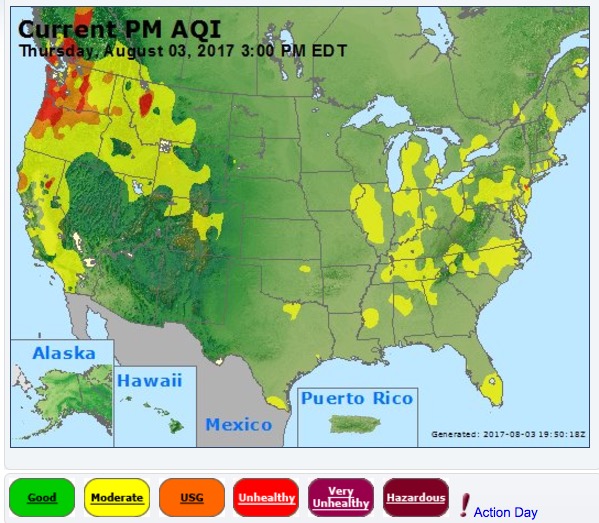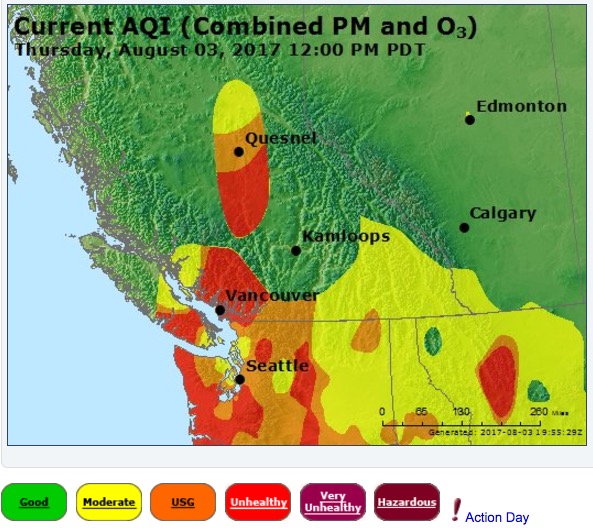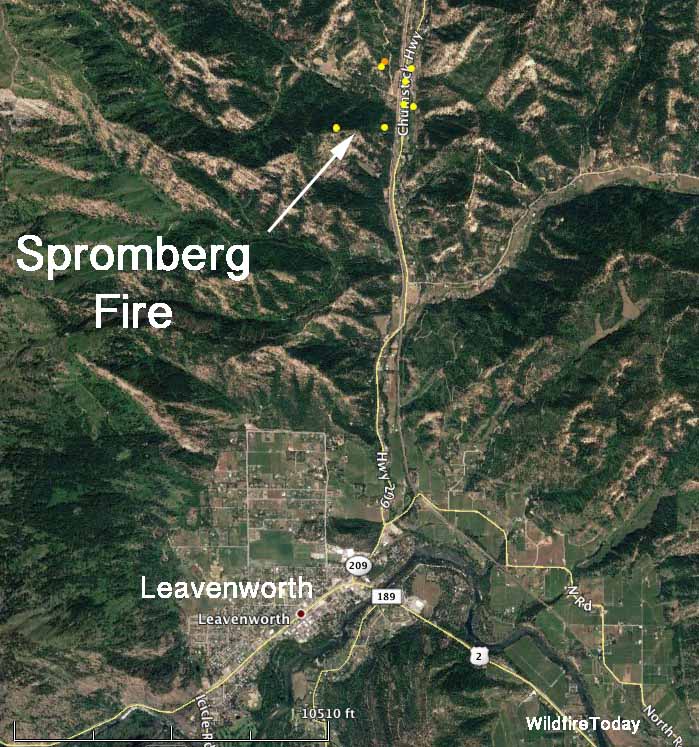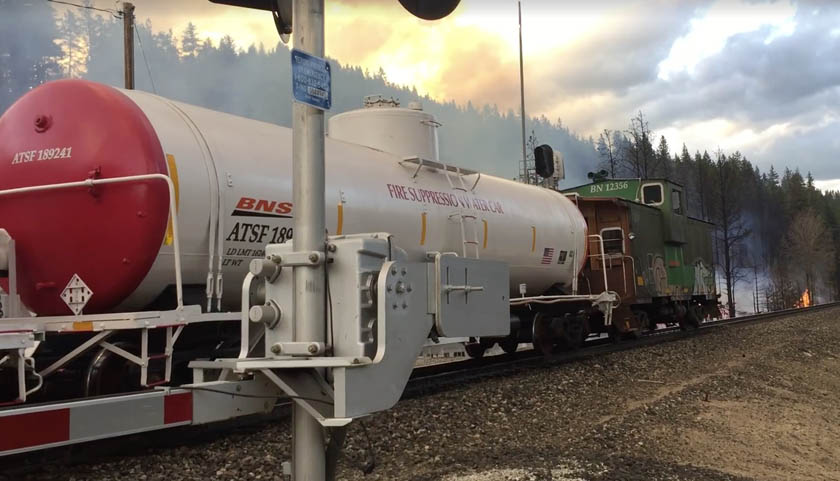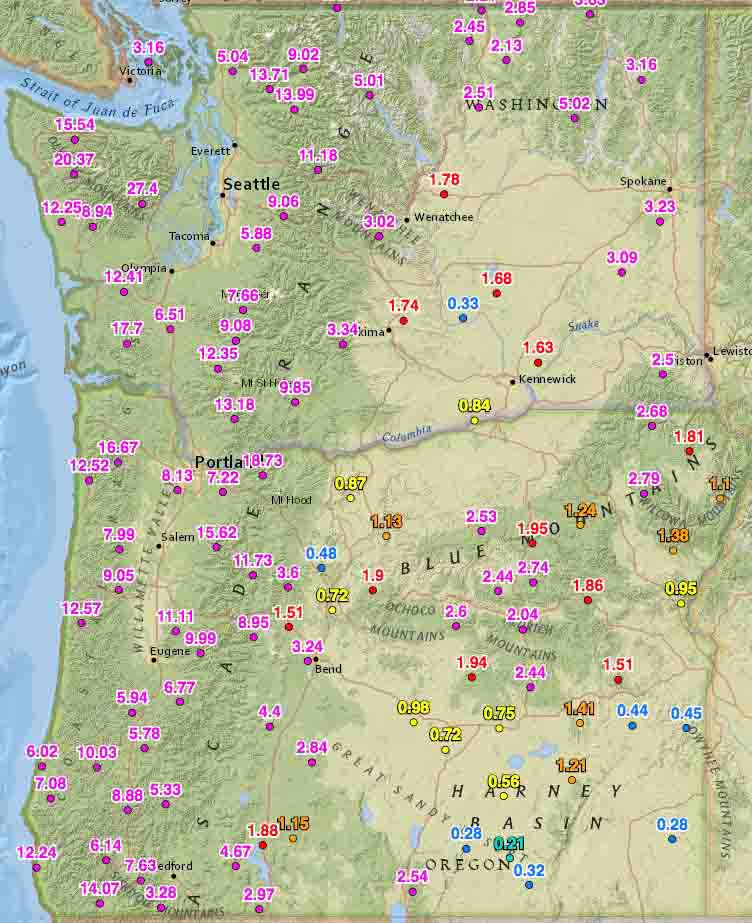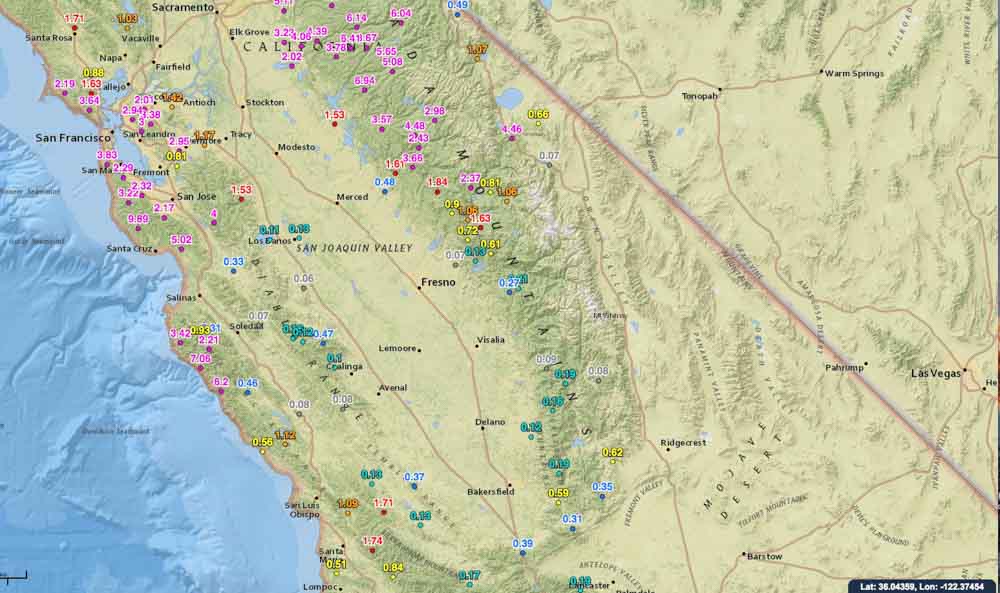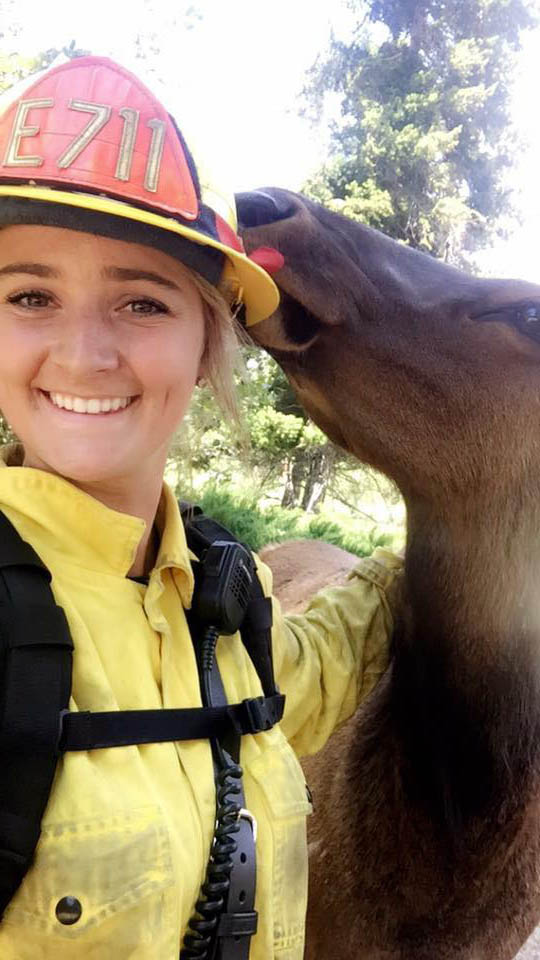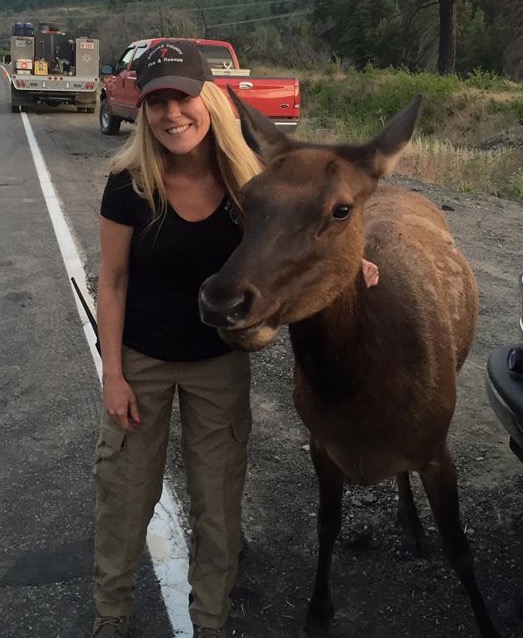Above: Satellite photo of smoke from wildfires in the U.S. Northwest and Southern British Columbia, August 5, 2017. The red dots represent heat detected by the satellite.
(Updated at 6:50 p.m. MDT August 5, 2017 to add the more current satellite photo above.)
Smoke from wildfires in Southern British Columbia continues to pour across the border into Washington and other states in the U.S. Northwest. The air quality in Washington is the worst that residents have seen in recent years, reaching unhealthy levels in some areas according to agencies that monitor particulates and other pollutants.
Currently there are 110 active wildfires in British Columbia — four of them are larger than 50,000 hectares (123,000 acres):
- Hanceville Riske Creek, 148,000 hectares (365,000 acres) approximately 60 km southwest of Williams Lake.
- Elephant Hill, 110,000 hectares (272,000 acres), near Ashcroft.
- Tautri Lake, 73,000 hectares (180,000 acres), 80 km northwest of Williams Lake.
- Baezaeko River-Quesnel West, 55,000 hectares (135,000 acres).
Below is a gallery of maps and graphics showing the location of the fires, air quality, and smoke. Click on an image to see a larger version and start a slide show. Captions are in the top-left corner.











